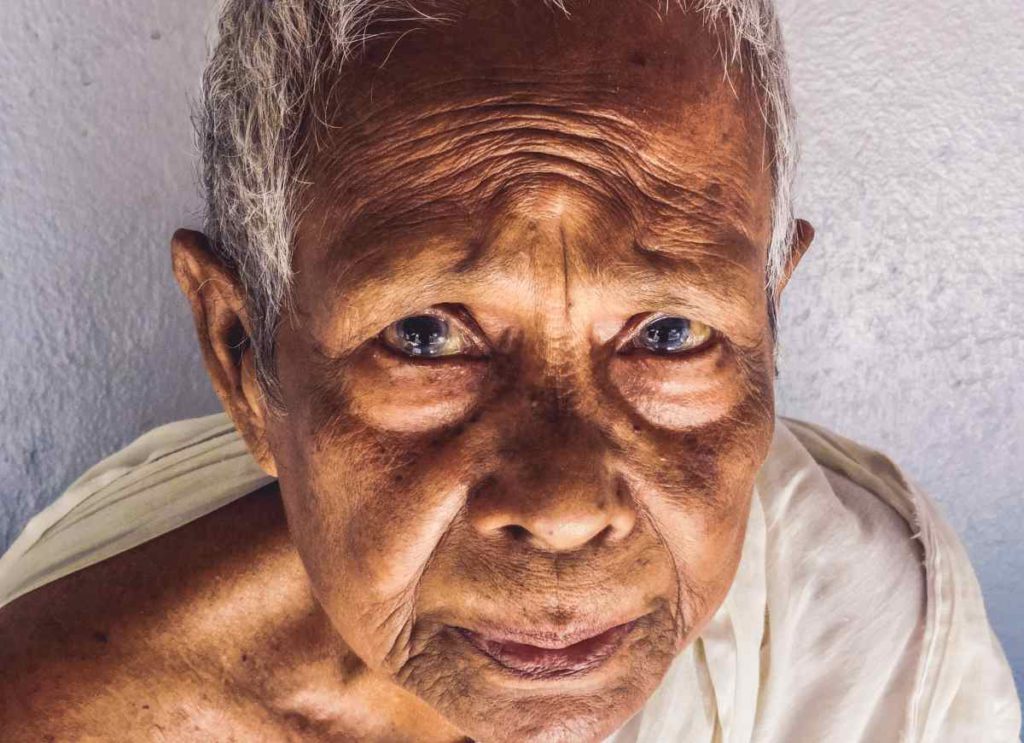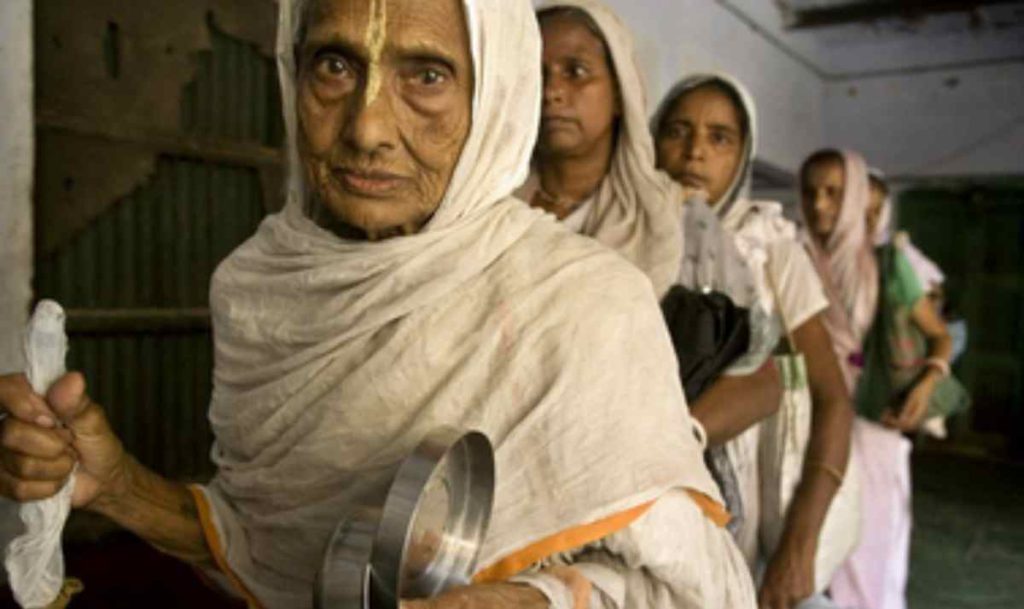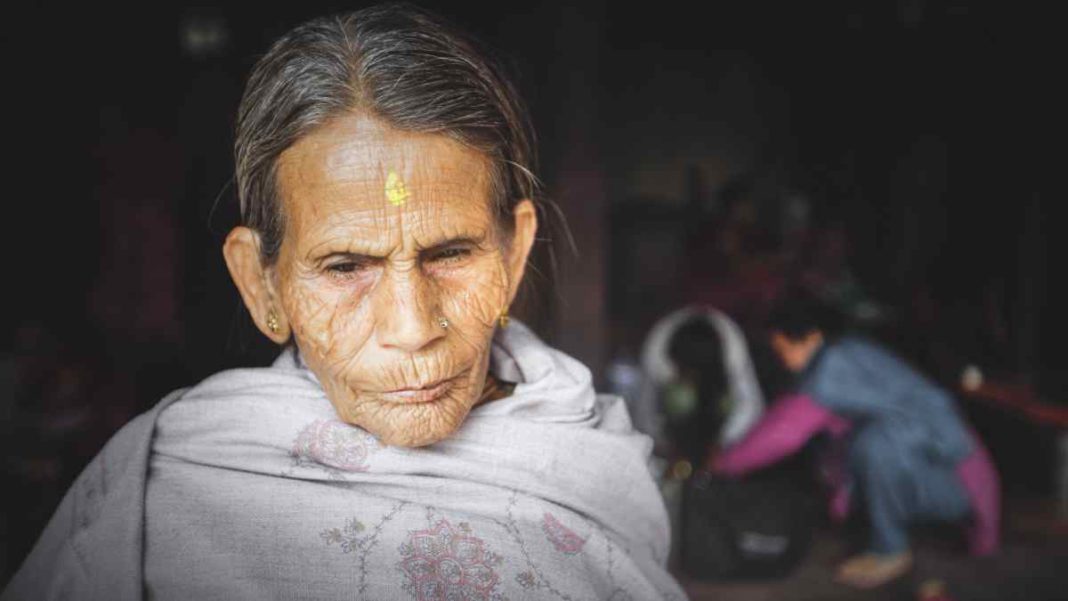INDIA: Living in oppressive environments, Indian widows come to the holy city of Vrindavan to find peace. However, widows in Vrindavan face a unique set of challenges as they navigate their lives in this spiritual city in northern India. Vrindavan is home to around 20,000-30,000 widows. Widows are often stigmatized and marginalized due to cultural beliefs that associate widowhood with bad luck and impurity.
However, for many widows in Vrindavan, their experiences of discrimination are further compounded by other factors, such as caste, class, and gender. In this article, we will explore the concept of intersectionality and how it applies to the situation of widows in Vrindavan.
Intersectionality and widows
Intersectionality refers to the idea that different forms of discrimination and oppression are interconnected and cannot be understood in isolation from each other. For example, a woman who belongs to a marginalized caste may face discrimination not only based on her gender but also based on her caste identity. Similarly, a poor widow may face discrimination not only based on her widowhood but also based on her class position.
For widows in Vrindavan, intersectionality is a lived reality. Many widows in Vrindavan belong to lower castes or Dalit communities, which have historically been marginalized and discriminated against. In addition to facing discrimination based on their widowhood, these women may also face discrimination based on their caste identity. They may be excluded from social and religious events, denied access to public spaces, and subjected to verbal and physical abuse.
While talking about the social stigma attached to widowhood in India, Radha (name changed) said, “I strongly believe that in India, there is a strong social stigma attached to widowhood. We are often considered inauspicious and blamed for our husband’s death. People also have this mentality that, since I’m a widow, I should live a life of isolation and mourning. My husband died years ago, but I feel like I’m still excluded from social and cultural events.”
“The worst part is that we aren’t even safe. Widows are often subjected to discrimination, abuse, and neglect, especially in rural areas. The stigma attached to widowhood has a long history in India and is rooted in cultural and religious beliefs. Efforts are being made by the Indian government, but there’s still a long way to go,” she added.
Factors affecting the widows of Vrindavan
Class is another factor that intersects with widowhood in Vrindavan. Many widows in Vrindavan are poor and depend on charity for their basic needs. They may live in crowded ashrams or on the streets, with limited access to healthcare and sanitation facilities. These women may face additional challenges, such as malnutrition and poor health, that are related to their poverty and lack of resources.

Gender is also an important factor that intersects with widowhood in Vrindavan. Women in India often face discrimination and inequality based on their gender, regardless of their marital status. Widows in Vrindavan may be subjected to sexual harassment and abuse and may be denied basic rights and opportunities that are available to men.
So, what can be done to address the intersectional discrimination faced by widows in Vrindavan?
One approach is to recognize and acknowledge the multiple forms of discrimination that widows face and to work towards holistically addressing them. This may involve efforts to raise awareness about the intersectionality of discrimination, as well as policy and programmatic interventions that target specific forms of discrimination, such as caste-based discrimination or gender-based violence.
Empowering widows through education and vocational training can also help to address some of the underlying factors that contribute to their marginalization. By providing widows with the skills and resources they need to become financially independent, they can gain greater autonomy and control over their lives.
Economic empowerment of widows in Vrindavan
Many widows in Vrindavan struggle to make ends meet and may rely on charity for their basic needs. This topic could examine efforts to promote economic empowerment among widows in Vrindavan, such as through vocational training programs or microfinance initiatives.


Many widows in Vrindavan belong to marginalized groups, such as lower castes, and may face multiple forms of discrimination. This topic could explore how factors such as caste, class, and gender intersect to shape the experiences of widows in Vrindavan.
The situation of widows in Vrindavan is complex and varies from individual to individual, but there are some general issues that many widows face.
Many widows in Vrindavan are elderly and have limited resources. They may live in ashrams or on the streets and depend on charity for their basic needs. They often face discrimination and social stigma due to cultural beliefs that associate widowhood with bad luck and impurity. Some widows are also vulnerable to abuse and exploitation, including physical and sexual abuse.
However, efforts are being made by non-profit organizations and government agencies to improve the situation of widows in Vrindavan. These efforts include providing food, shelter, healthcare, and vocational training to widows, as well as raising awareness about their rights and addressing social stigma. Nonetheless, there is still a long way to go to ensure that all widows in Vrindavan can live with dignity and security.
In conclusion, the concept of intersectionality is crucial for understanding the situation of widows in Vrindavan. By recognizing the multiple forms of discrimination that widows face, we can work towards addressing the underlying factors that contribute to their marginalization and empowering them to lead lives of dignity and security.
Only by taking an intersectional approach can we ensure that all widows in Vrindavan can access their basic rights and live free from discrimination and oppression.
Also Read: Unnayan Foundation Felicitates Widows of the Indian Armed Forces Personnel



